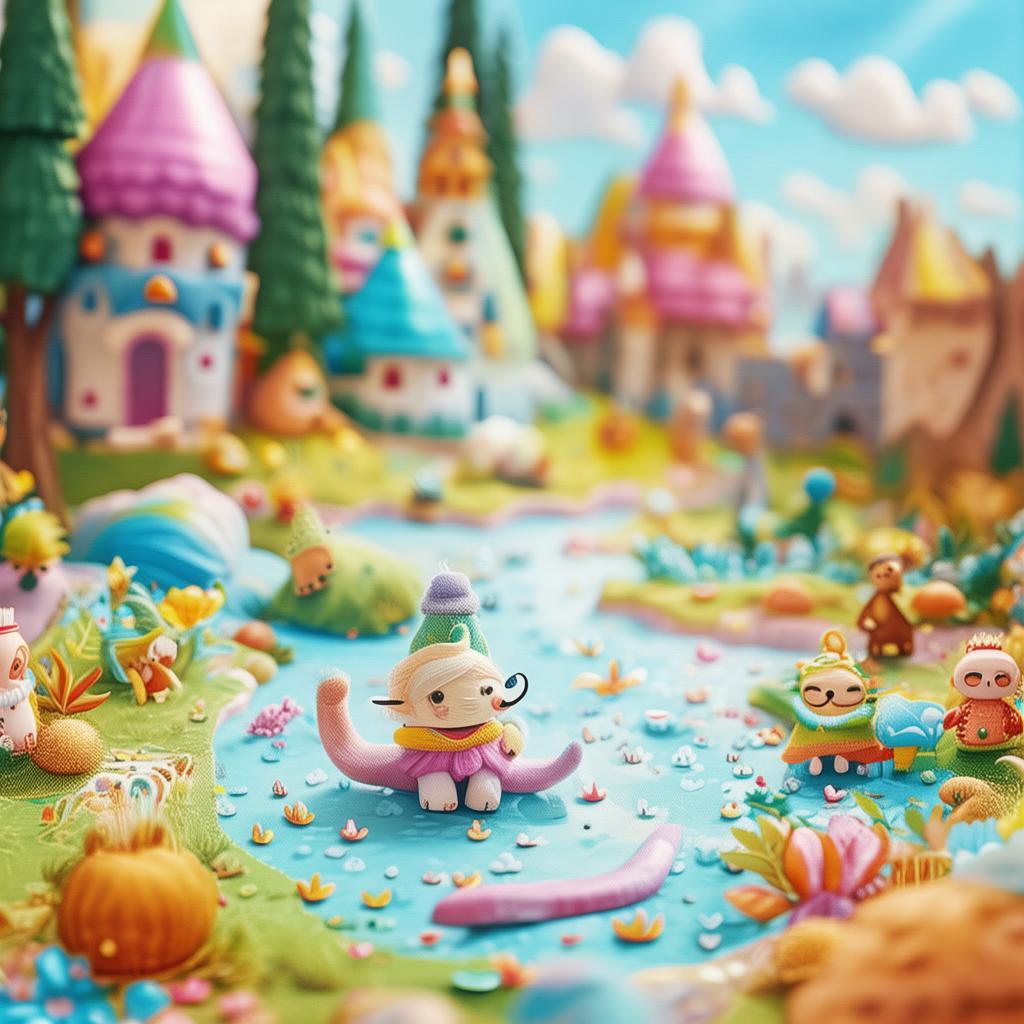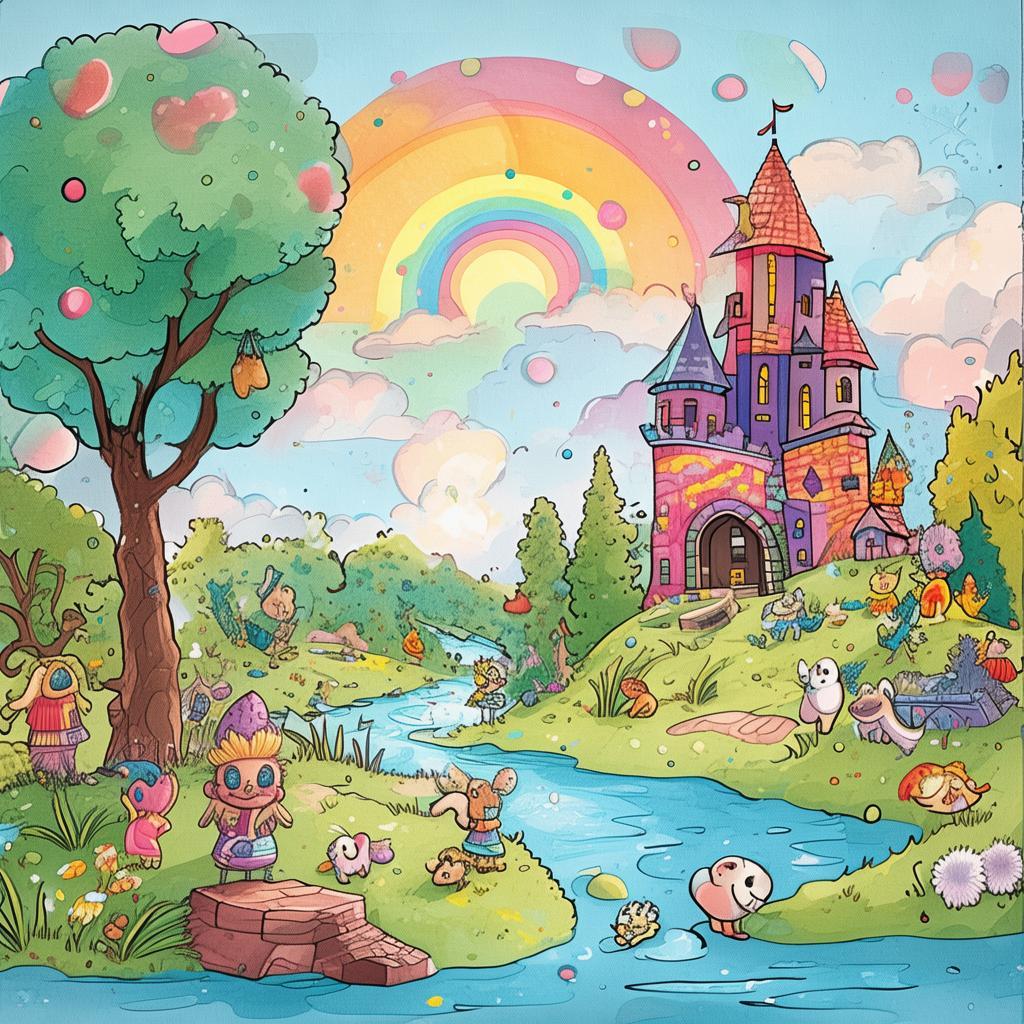The Last Ride of Bus 42
The sun dipped below the horizon, casting a golden hue over the quaint town of Maplewood. The streets were quiet, save for the distant hum of the highway and the soft rustle of the wind through the trees. It was the kind of night where secrets whispered through the shadows, and the air was thick with anticipation.
Bus 42, a relic of the 1950s, rumbled to life with a grumble that seemed to echo the town's history. Its worn-out leather seats creaked with every turn, and the windows fogged up with the breath of its passengers. The driver, Mrs. Penelope, a spry woman with a twinkle in her eye, adjusted the mirror and checked her watch. It was time for the last ride of the day.
The bus was filled with the usual suspects: the over-eager fifth-grade class from Maplewood Elementary, the quiet librarian, Mr. Thompson, and the mischievous twins, Jamie and Jake. But today, something was different. The air was charged with an unspoken excitement, as if the bus itself knew it was about to embark on a journey unlike any other.
"Alright, everyone, settle in," Mrs. Penelope called out, her voice a soothing balm to the children's restless energy. "We're on our way to the final stop."
The children tugged at their seatbelts, their eyes wide with curiosity. The librarian, Mr. Thompson, reached into his briefcase and pulled out a worn-out map. "I've been wondering about this," he said, pointing to a small, unmarked spot on the map. "What's at the final stop?"
Jamie and Jake exchanged excited glances. "It's the old mill," Jamie whispered. "The one that's been abandoned for years."
Mrs. Penelope chuckled. "I remember that mill. It's a place of many stories, but none of them are true. It's just an old building."
The bus rumbled along, the engine's rhythm a steady beat against the night. The children's chatter faded into the background as the town's lights began to twinkle in the distance. The final stop was in sight, and the children's excitement reached a fever pitch.
"Here we are," Mrs. Penelope announced, pulling the bus to a stop. "The final stop."

The children tumbled out of the bus, their laughter mingling with the night air. They gathered around the old mill, its windows dark and its doors creaking with age. The twins pushed open the creaky gate, and the group stepped inside.
The mill was vast, its walls lined with cobwebs and dust. The air was musty, and the scent of decay hung heavy in the air. The children's footsteps echoed through the empty halls, and the silence was almost deafening.
"Look," Jamie whispered, pointing to a dusty bookshelf. The bookshelves were filled with old, leather-bound volumes, their spines cracked and their pages yellowed with age.
"Let's explore," Jake said, his eyes gleaming with adventure.
The children spread out, each drawn to a different corner of the mill. Mr. Thompson approached the bookshelf and began to search through the books. He pulled out a tattered journal and flipped through the pages. "This is incredible," he said, his voice filled with awe. "It's the diary of the school bus's final stop."
The children gathered around, their eyes fixed on the journal. Mrs. Penelope joined them, her curiosity piqued. "What does it say?"
The journal was filled with entries from years past, each detailing the adventures of Bus 42 and its passengers. The children read aloud, their voices rising and falling with the story's twists and turns.
One entry, in particular, caught their attention. It was from the day of the first ride of Bus 42, and it spoke of a secret that had been hidden within the town for generations.
"What secret?" Jamie asked, her voice tinged with excitement.
The journal didn't provide the answer, but it did hint at a clue. The children knew they had to uncover the truth. They began to search the mill, their hearts pounding with anticipation.
As they explored deeper into the mill, they discovered a hidden room behind a loose brick in the wall. The room was filled with old photographs, letters, and artifacts. Among the items was a small, ornate box. The children opened it, and inside they found a key.
The key was small, intricately designed, and it fit perfectly into a lock on the back of the mill. With a click, the lock opened, revealing a hidden compartment. Inside was a letter, addressed to Bus 42.
The letter spoke of a hidden treasure, buried deep within the town. The children knew they had to find it, but they also knew they couldn't do it alone. They returned to the bus, their hearts filled with determination.
Back on the bus, Mrs. Penelope listened to their story with a mix of awe and concern. "You can't go looking for treasure," she said. "It's too dangerous."
But the children were determined. They knew that the treasure was more than just gold or jewels; it was the key to unlocking the town's hidden history. They had to find it.
The next day, the children, along with Mr. Thompson and Mrs. Penelope, set out on a new adventure. They followed the clues in the journal, leading them to the old town square. There, they found a large, stone marker, its surface etched with symbols and runes.
"Look," Jamie said, pointing to the symbols. "These are the same ones in the journal."
The children worked together, deciphering the symbols. When they had decoded them, they found a hidden compartment beneath the marker. Inside was a map, showing the location of the treasure.
The treasure was hidden in the old mill, beneath the floorboards. The children returned to the mill, their hearts pounding with anticipation. They worked together, removing the floorboards and digging through the dirt.
Finally, they reached the treasure. It was a chest, filled with gold coins, jewels, and artifacts. But the most precious item was a small, ornate box, similar to the one they had found in the hidden room.
Inside the box was a letter, addressed to the town of Maplewood. The letter spoke of the town's history, of the struggles and triumphs of its people. It also spoke of the treasure, which was meant to be used for the betterment of the town.
The children returned the treasure to the town council, and their discovery was celebrated. The old mill was restored, and the town square was renamed in honor of the children's bravery and curiosity.
The final stop of Bus 42 was no longer just a place of secrets and whispers; it was a place of hope and inspiration. The children had learned that sometimes, the greatest treasures are not found in gold or jewels, but in the stories and memories that bind us together.
And so, the last ride of Bus 42 ended not with a whimper, but with a roar of triumph. The bus rumbled back to Maplewood, its passengers' hearts filled with joy and wonder. They knew that the adventure had only just begun, and that the true treasure was the friendship and trust they had found along the way.
✨ Original Statement ✨
All articles published on this website (including but not limited to text, images, videos, and other content) are original or authorized for reposting and are protected by relevant laws. Without the explicit written permission of this website, no individual or organization may copy, modify, repost, or use the content for commercial purposes.
If you need to quote or cooperate, please contact this site for authorization. We reserve the right to pursue legal responsibility for any unauthorized use.
Hereby declared.









